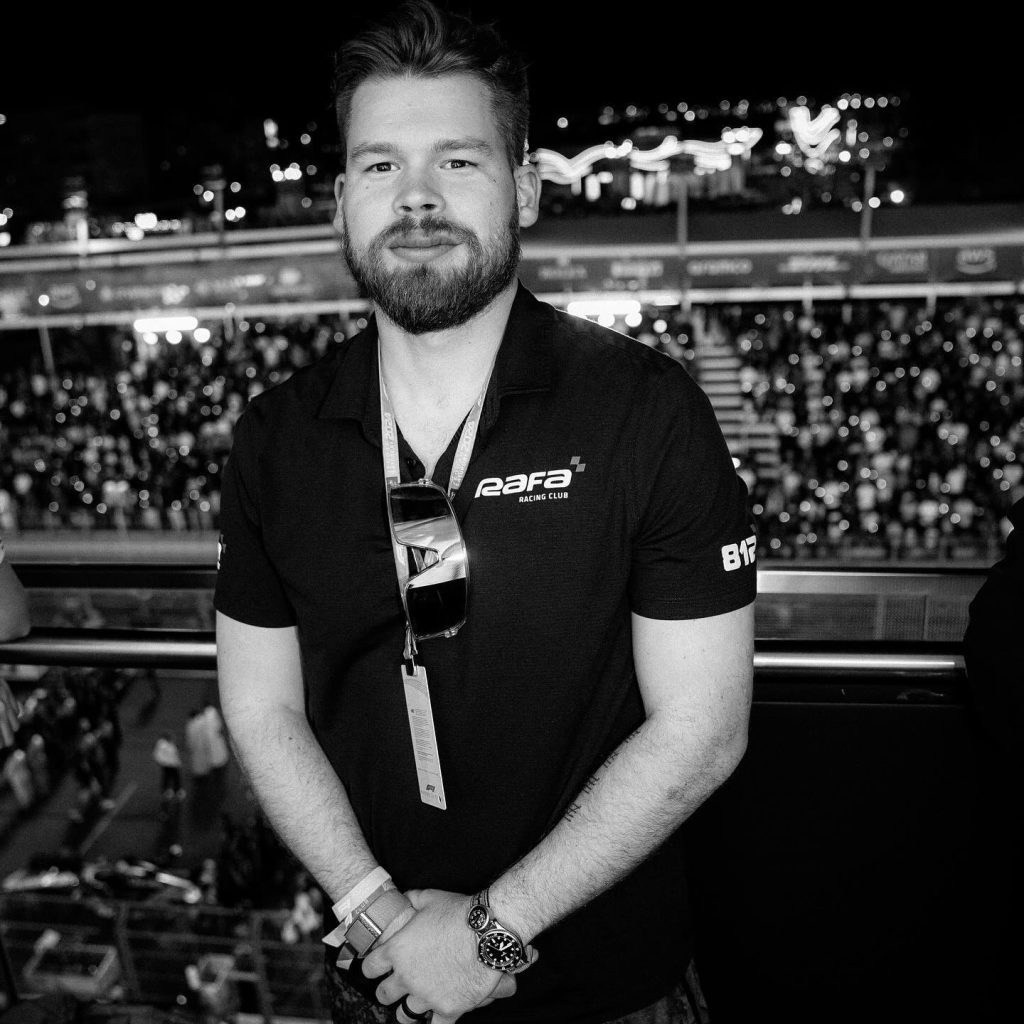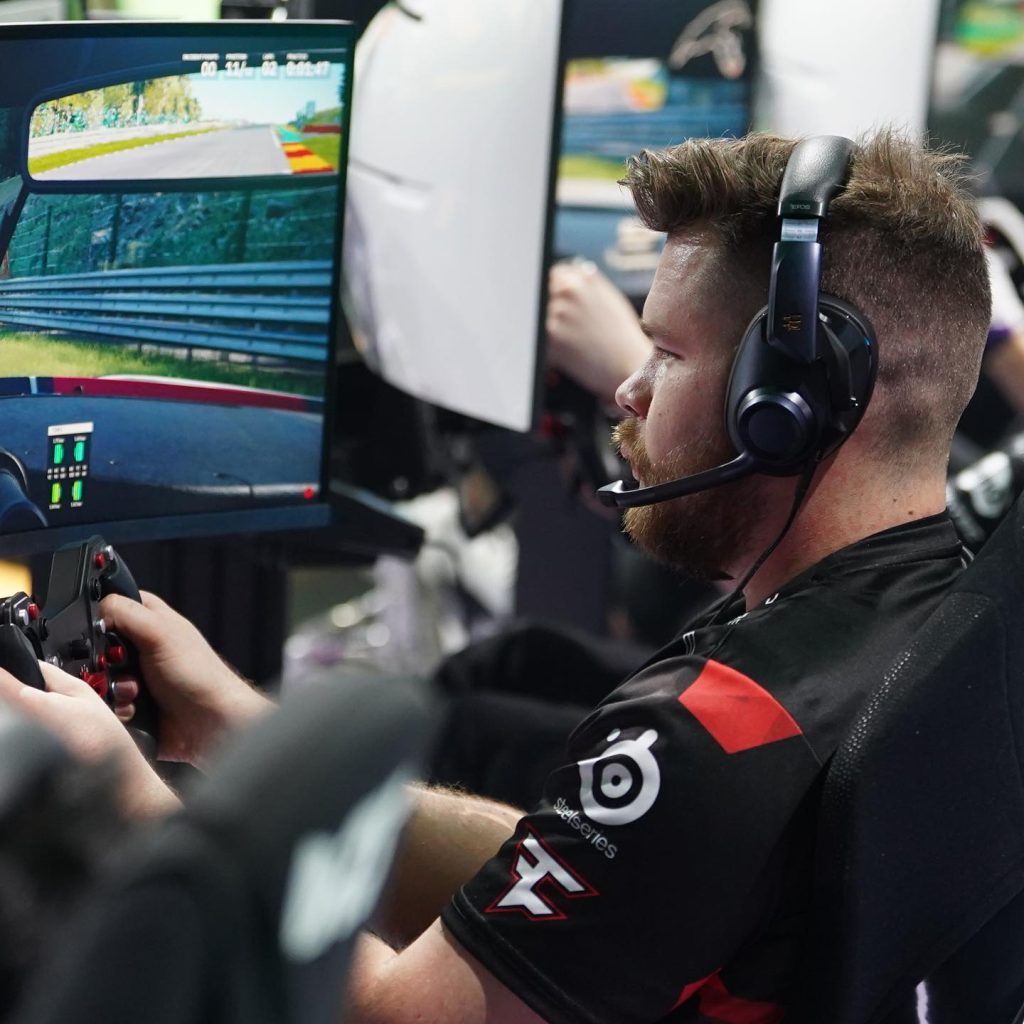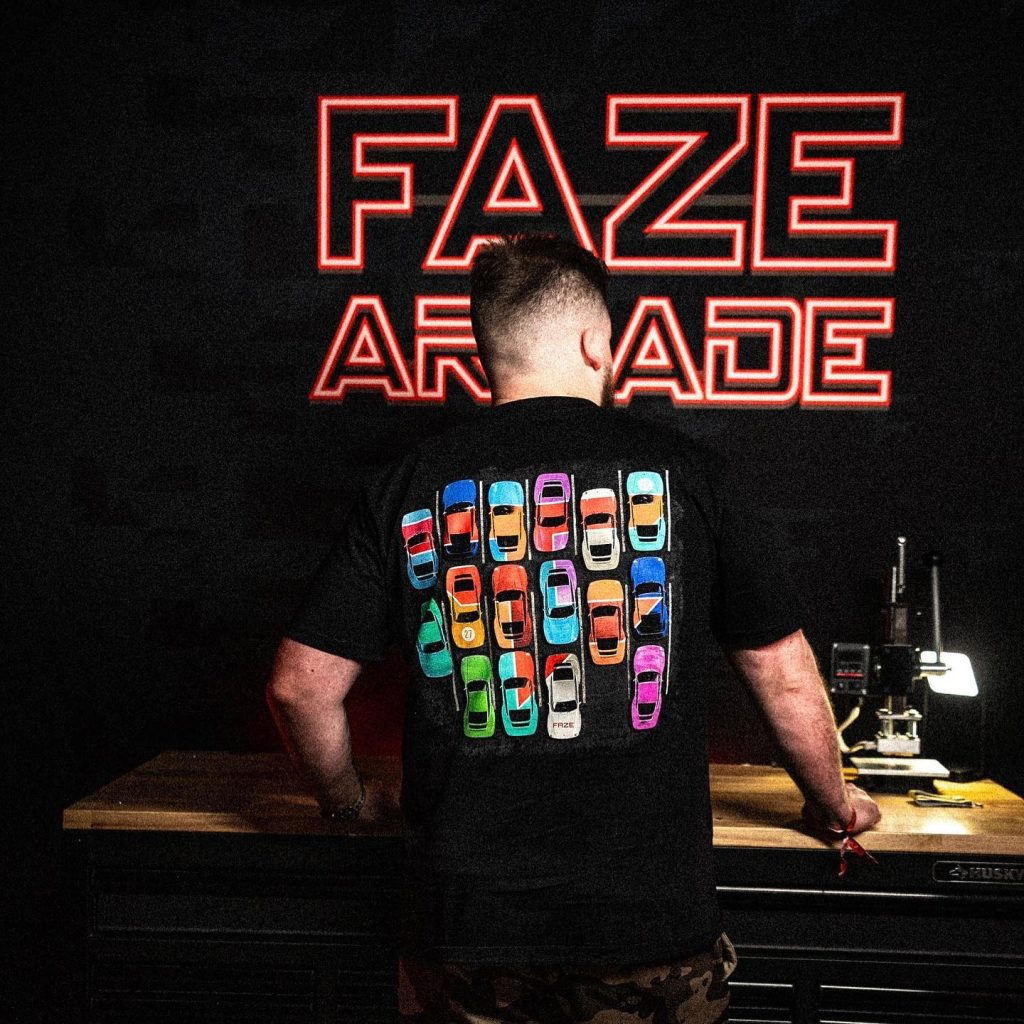
Shifting Gears: Ian ‘Crimsix’ Porter’s Journey From Esports To Motorsports
July 16, 2024HOW A CALL OF DUTY WORLD CHAMPION CONQUERED SIM RACING AND IS NOW TAKING THE MOTORSPORTS WORLD BY STORM
Ian Porter is no stranger to the thrill of competition. Known for his dominance in the esports realm as a three-time Call of Duty world champion under his handle Crimsix, Porter has always pushed boundaries and embraced new challenges. His latest venture, however, takes him from the virtual battlegrounds to the real-world race tracks.
After a stellar sim racing stint with FaZe Clan, Porter has traded his gaming gear for the steering wheel of a Porsche 911 GT3 Cup car, debuting with resounding victories in the Porsche Sprint Challenge North America. In this exclusive Q&A, Porter delves into his remarkable journey, the rigorous training that fueled his transition and his aspirations in the high-speed world of motorsports.
CAN YOU PINPOINT A TIME OR SPECIFIC MOMENT WHEN YOU REALIZED THAT ESPORTS COULD BE YOUR PROFESSIONAL CAREER?
The pivotal moment came when we placed 4th at the COD Champs in 2013. At that time, I was balancing college and seasonal jobs. Placing 4th earned us $100,000, so each team member took home about $25,000. We decided to invest this money in fully dedicating ourselves to gaming to see how far we could go. This decision paid off as we won almost every tournament the following year, including the 2014 COD Champs, where each of us earned another $100,000.

WHAT ARE SOME OF THE MAIN DIFFERENCES BETWEEN THE ESPORTS INDUSTRY TODAY COMPARED TO WHEN YOU STARTED, AND THE OPPORTUNITIES FOR PLAYERS TODAY?
When I started, the concept of being a “pro” gamer was still nascent—it was more a hobby than a career. Even though we called ourselves professionals, none of us could truly earn a living solely from gaming. Today, the landscape has transformed dramatically. There are abundant opportunities for pro gamers, including sponsorships, content creation, and substantial starting salaries. My first salary was a mere $500 per month, and we often had to cram our whole team into one hotel room to avoid spending more than we earned. The industry has definitely evolved from those early days.
YOU WERE INVOLVED IN ONE OF THE MOST SUCCESSFUL NON-ENDEMIC ESPORTS MARKETING CAMPAIGNS WITH OPTIC GAMING AND TURTLE WAX. CAN YOU GIVE US A BEHIND THE SCENES VIEW OF THAT CAMPAIGN, USING YOUR OWN PERSONAL PORSCHE AND WHAT MADE THIS CAMPAIGN SUCCESSFUL?
Turtle Wax was an incredible partner, and they really embraced our input on content creation, which was key to the campaign’s success. We integrated Turtle Wax products into our videos and activities, and they even decorated the garage of the OpTic Gaming Scuf House in Chicago with branded graffiti and artwork, which served as a dynamic backdrop for our livestreams and video content.
Having my personal Porsche at one of the tournaments was especially exciting. It was a great way to blend my passions for gaming and automotive with the fan experience. This personal connection was amplified by our road trip to the ESPN X Games, where Turtle Wax featured prominently.
What made this campaign truly successful was the authenticity of the integration. Our audience knows cars are a significant part of our lives—many of my vlogs occur in my car, and I regularly produce car-related videos. This campaign allowed us to showcase Turtle Wax products naturally, speaking directly to our fans in a voice they trust. The collaboration was not just about product placement but creating engaging, genuine content that resonated with our community.
WHAT INITIALLY DREW YOU TO CALL OF DUTY OVER OTHER COMPETITIVE GAMING TITLES?
My competitive gaming journey started with Call of Duty back in 2008. I achieved pro status in my first ever MLG circuit, where our team placed third. We had a very young team, including two 14-year-olds, a 15-year-old, and an 11-year-old—a lineup that would be quite unusual today. At the time, we were just starting out and didn’t have a clear strategic approach, and our parents even restricted us from competing on LAN for the finals. The fast-paced nature of the game and its engaging community really resonated with me, setting the foundation for my professional career in esports.

WHAT PROMPTED YOUR DECISION TO STEP AWAY FROM PLAYING CALL OF DUTY PROFESSIONALLY AND TRANSITION INTO SIM RACING WITH FAZE CLAN?
Truthfully, I grew tired of Call of Duty. The physical fatigue, especially in my hands, and the influx of much younger players made me reconsider my path. I wanted to pursue other passions before it was too late. Many know me as “FaZe Crimsix” from my days of streaming Call of Duty, where I had the privilege of winning three world championships and numerous other tournaments. This success established a solid foundation for my transition into racing.
I started my racing journey with sim racing, knowing well what I wanted to achieve—not just to dominate virtually but to acquire skills applicable to real-world racing circuits. Joining FaZe Clan’s sim racing team and competing in the ESL R1 league was pivotal. It bridged my esports experience with competitive racing, opening up new opportunities.
The transition to actual track racing was challenging, but I embraced it fully. My debut race weekend at Sebring with the RAFA Racing Team by JDX in the Porsche Sprint Challenge North America was more than promising; it was victorious. Winning a pair of races not only highlighted the hard work and preparation involved but also demonstrated the transferability of sim racing skills to the track.
These achievements not only challenge the narrative about the capabilities of sim racers but also inspire others. They show that with dedication and commitment, it’s possible to excel in entirely new domains.
FOLLOWING YOUR TRANSITION TO SIM RACING, YOU’VE NOW MOVED INTO PHYSICAL MOTORSPORTS RACING WITH RAFA RACING CLUB. CAN YOU DESCRIBE HOW THIS OPPORTUNITY AROSE AND WHAT YOUR ASPIRATIONS ARE IN THIS NEW ARENA?
The shift to physical motorsports happened quite rapidly. Although my performance in the ESL R1 sim racing league wasn’t stellar, my dedication didn’t waver. During the off-season, a friend involved in coaching and data analysis at Rafa Racing Club invited me to join them for local track days at the Circuit of the Americas. This experience was pivotal; it was both exhilarating and enlightening. I attended another track day where Rafael Martinez informed me about an open seat for the upcoming Porsche Sprint Challenge. Eager for the opportunity, I pledged my full commitment.
With the Formula 1 event at COTA just weeks away and no assurances in place, I began an intensive regime, hitting the gym twice a day and shedding 10 pounds in two weeks to demonstrate my seriousness. At the F1 event, it was confirmed: I secured the seat and was advised that serious physical training would commence immediately. My goal is to excel in this challenging environment, leveraging my sim racing background to maximize my performance on real tracks, and, ultimately, make a significant impact in the world of motorsports.

SIM RACING HAS EFFECTIVELY ENGAGED GAMERS WITH TRADITIONAL MOTORSPORTS. WHAT IS YOUR PERSPECTIVE ON HOW OTHER TRADITIONAL SPORTS LEAGUES CAN ENGAGE YOUTH EFFECTIVELY THROUGH GAMING?
Sim racing stands out because it’s a direct simulation—nearly a 1:1 reflection of real life. Modern simulation technologies utilize laser scanning to capture the minutest details of tracks, cars, and tires, and accurately convert these into the digital realm. This precision is what makes sim racing so immersive and a true reflection of actual motorsports. However, translating other sports into gaming is more challenging because they typically involve more physical movement, which doesn’t convert seamlessly into a seated gaming experience. Although flight sims have also managed to capture this high level of realism and engagement, for sports requiring more dynamic physical interaction, the transition isn’t as straightforward. Innovating ways to blend physicality with gaming could be key to engaging young audiences more effectively across a broader range of sports.
WHAT WOULD YOU CONSIDER TO BE YOUR FAVORITE MOMENT OF YOUR CAREER?
Although I previously would have cited a particular gaming tournament victory as my favorite career moment, it has now shifted to my success in real-life motorsport. Crossing the finish line in first place at Sebring in my very first race was absolutely the highlight. The journey from sim racing—where I often finished last in the pro league—to winning a physical race seemed almost surreal. That transition and ultimate victory made all the challenges and efforts worthwhile, marking a significant milestone not just in my career but in my personal growth as well.
WHAT DOES BEING INDUCTED INTO THE ESTA HALL OF FAME MEAN TO YOU AND YOUR RELATIONSHIP WITH ESTA?
Being inducted into the ESTA Hall of Fame is an incredible honor that means a great deal to me. It not only highlights my achievements in esports but also solidifies my relationship with ESTA. This recognition is a testament to the journey and the people I’ve met along the way within the industry and through the association. It underscores the importance of community and collaboration in our industry, and I’m thrilled to continue fostering relationships that inspire and drive forward the world of esports.
Categorized in: Esports Guide



